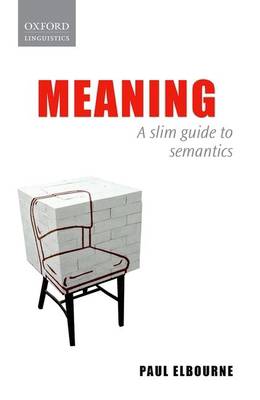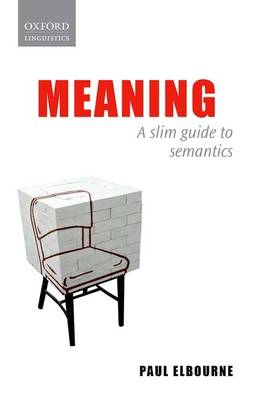
- Retrait gratuit dans votre magasin Club
- 7.000.000 titres dans notre catalogue
- Payer en toute sécurité
- Toujours un magasin près de chez vous
- Retrait gratuit dans votre magasin Club
- 7.000.0000 titres dans notre catalogue
- Payer en toute sécurité
- Toujours un magasin près de chez vous
48,45 €
+ 96 points
Format
Description
Our outstanding ability to communicate is a distinguishing features of our species. To communicate is to convey meaning, but what is meaning? How do words combine to give us the meanings of sentences? And what makes a statement ambiguous or nonsensical? These questions and many others are addressed in Paul Elbourne's fascinating guide. He opens by asking what kinds of things the meanings of words and sentences could be: are they, for example, abstract objects or psychological entities? He then looks at how we understand a sequence of words we have never heard before; he considers to what extent the meaning of a sentence can be derived from the words it contains and how to account for the meanings that can't be; and he examines the roles played by time, place, and the shared and unshared assumptions of speakers and hearers. He looks at how language interacts with thought and the intriguing question of whether what language we speak affects the way we see the world. Meaning, as might be expected, is far from simple. Paul Elbourne explores its complex issues in crystal clear language. He draws on approaches developed in linguistics, philosophy, and psychology -- assuming a knowledge of none of them -- in a manner that will appeal to everyone interested in this essential element of human psychology and culture.
Spécifications
Parties prenantes
- Auteur(s) :
- Editeur:
Contenu
- Nombre de pages :
- 192
- Langue:
- Anglais
- Collection :
Caractéristiques
- EAN:
- 9780199696628
- Date de parution :
- 01-12-11
- Format:
- Livre broché
- Format numérique:
- Trade paperback (VS)
- Dimensions :
- 137 mm x 216 mm
- Poids :
- 226 g

Les avis
Nous publions uniquement les avis qui respectent les conditions requises. Consultez nos conditions pour les avis.






